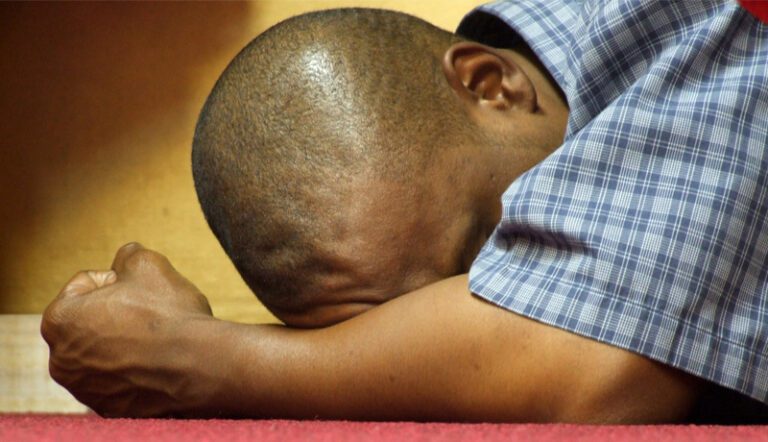Over the past few months I have been in touch with a few black and brown friends, church leaders and mission institutional leaders. The conversation with them felt like a deliberate shift away from the diversity commitment that took place five years ago. But their diverse cultural perspectives are undoubtedly needed today more than ever in our churches and mission institutions.
We are rapidly approaching a turning point in diversity.
Four years ago, in 2021, there was a census in the UK. The census took place in the midst of a Covid-19 lockdown. This is an era of great uncertainty and social turmoil. We were able to learn the results of all the hard work after about a year. That’s when we learned something important about the changing faces of our society. There was a significant increase in what is known as “non-white British” in this country.
In the 2011 census, white Britons accounted for 80.5% of the population. By 2021, that number had fallen to 74.4%. Other groups saw considerable growth over the same period. “Other White” rose from 4.4% to 6.2%, from 2.2% to 2.9%, “mixed” for “Asian” rose from 7.5% to 9.3%, and “black” rose from 3.3% to 4.0%. Essentially, 20% of the country’s population is in Africa, Asia and Latin America. If white non-British people are included, this figure increases by up to 25%.
The increased ethnic and cultural diversity of the population is reflected in the Christian community.
These changes are not just sociological statistics. They have deep and lasting meaning in the Church of England. The increased ethnic and cultural diversity of the population is reflected in the Christian community.
More and more, churches across the country are becoming multicultural spaces shaped by a variety of worship traditions, theological perspectives and cultural expressions of faith. In particular, the growth of congregations in Africa, the Caribbean, Asia, Latin America, and Eastern Europe has brought new vitality, spiritual depth and new ways to re-do the churches that challenged the challenges that inherited British norms.
Diversity, missionary speaking, is the best survival strategy.
This variety is a gift, but it also poses a major challenge. It requires reimagining what Christ’s unity looks like in a context where cultural differences are realistic and deeply felt. It forces the Church of England to move beyond tokenism and mere inclusion, towards authentic intercultural disciples, mutual respect, and shared leadership.
As many countries in the West become more diverse, so should our theology, our mission, and our ecclesiastics.
The British Christian face calls us to recognize that they are no longer primarily white and not western. Instead, it is global, diasporic, richly diverse, reflecting the global body of Christ.
As many countries in the West become more diverse, so should our theology, our mission, and our ecclesiastics. The changing demographic invites the church to listen more carefully to the voices from the border, celebrate the various ways of meeting God, and develop communities that reflect the full breadth of God’s kingdom.
Census data in this sense is not merely a government report. It is a prophetic sign pointing us towards the reality of the new church already here, whether we are ready or not.
Multicultural worship spaces are no longer an option for us.
Worship in a multicultural community reflects the unity of church diversity and gives us a glimpse into the global body of Christ that has come together. It also adds to creating worship where all expressions are valued and integrated, including songs from different cultures. This includes a variety of languages, musical styles and worship practices.
Challenge the congregations, go outside their cultural comfort zone and meet God through others. Multicultural worship is an act of justice and hospitality, dismantling cultural control and asserting that no culture owns a path to worship. It does well, and it deepens the community, invites spiritual movements, and reflects God’s inclusive kingdom.
For mission organizations, increasing cultural diversity requires a shift from a Western-centric model.
For mission organizations, increasing cultural diversity requires a shift from a Western-centric model to a truly global church-reflection model. Global missions are no longer the rest of the missions from the West, they are everywhere and everywhere. Agency must embrace intercultural leadership and build mutual partnerships, including voices from the majority world and the diaspora community.
Missionary training should prioritize cultural humility and collaboration across differences. This shift calls for structures and strategies that reflect the diverse body of Christ and the work of the spirit in all cultures.
Mission organizations must become facilitators of global, inclusive, mutually rich expression of God’s mission.
It was originally published in Harvey’s Subsack. It was reissued with permission.
Dr. Harvey Kwiyani is a Malawian mythology and theologian who has lived, worked and studied in Europe and North America for the past 20 years. He studied African Christianity and African theology for his PhD and taught African theology at Liverpool Hope University. Harvey is also the founder and executive director of Missio Africanus, a mission organization founded in 2014 as a learning community focused on unlocking the missionary potential of Christians living in the UK in Africa and other ethnic minorities. Most recently he has become the lead in the African Christian Programme in CMS (UK) Pioneer Mission Training.
